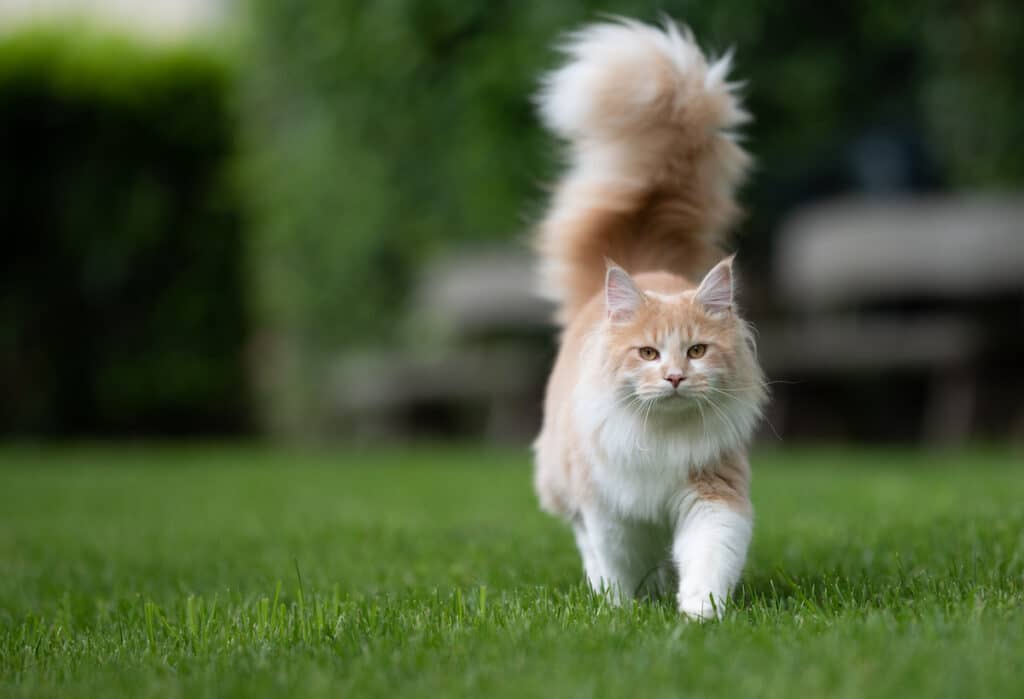Why do cats’ tails wag? You might be shocked to hear that a cat’s tail wagging differs greatly from a dog’s. Cats have a distinct body language all their own. They may flick their tails while walking, thump them while lying down, or hold them up high when they notice you. However, if you do some study and pay careful attention to your cat, you can quickly figure out what he’s trying to communicate when he wags his tail.
Cats Sometimes Wag or Thump Their Tails While Lying Down
Why are they lying down and waving their tails? When cats relax, their tails may wag or thud, which can be very weird. Frequently, it indicates that she is starting to feel a little overstimulated. She might swish her tail a little after you pet her if she’s calmly lying down or even sitting. She may be a little irritated or overstimulated and need some space from you if her tail is wagging.
While she was previously resting down calmly, it can also indicate that she has a lot of energy and is now prepared to play. You should take your hand away, stop caressing her, and go get a cat toy at this point. Otherwise, you risk having an overly enthusiastic cat scratch you a few times as your hand quickly turns into the toy.
Cats May Even Wag Their Tails When Sleeping
Why do cats’ tails wag when they sleep? Your cat may occasionally twitch his tail when dreaming and in a deep slumber. Or his tail might twitch a little while he sleeps, exactly like your muscles do. He might not always be sleeping as soundly as you believe. He’s probably awake and considering getting up if you call his name and he doesn’t come to you but instead slowly starts to wag or swish his tail. You can tell he hears you and recognizes you by the delicate swish of his tail.
Cats May Wag Their Tails When Hunting
When hunting, cats also wag their tails. This can occasionally appear more like a vigorous swish or even a constant pounding. This frequently occurs as she becomes intensely concentrated on her meal while observing birds outside the window. As she observes the birds, she might also create “clicking” noises, and you might even notice her fur moving slightly. If your cat is chasing after a bug in your home and getting ready to channel her inner tiger as she sprints for her catch, she might swish her tail in a similar way. Your cat’s tail can aid in balance and agility, so wagging it while on the prowl keeps her poised to pounce.
Cats May Display a Puffy Tail When Threatened
When a cat senses danger or gets startled out of the blue, he will puff out his tail until it is at least twice as wide as usual. He might also try to appear bigger and more dangerous by puffing out the rest of his fur. When he spots a foreign cat and is getting ready to fight, he frequently does this. But he might also do this if he hears a noise that startles him and he is unsure of what is going on.
Cats Wag Their Tails When They’re Happy and Confident
Do cats ever wag their tails when they’re happy in the same way that dogs are known to do? While cats don’t typically wag their tails with the same level of enthusiasm as dogs do when they’re joyful, they can do so. Your cat will roam about your house with her tail lifted high and pointing directly up to the sky when she is joyful and self-assured. Additionally, she will occasionally softly twitch or curve the tip of her tail. Dogs don’t wag their tails with the same exuberance, but this is a more subdued manner for her to convey her happiness and contentment.
When playing, cats may also wag their tails more vigorously, swishing them from side to side. When your cat chases a feather wand you’re holding or when two cats are “play fighting,” you could observe her doing this. This can help determine whether two cats are playing or are fighting seriously. Your cat is more likely to puff up her tail if she senses danger. She tends to swish and wag it more when she’s just having fun.














